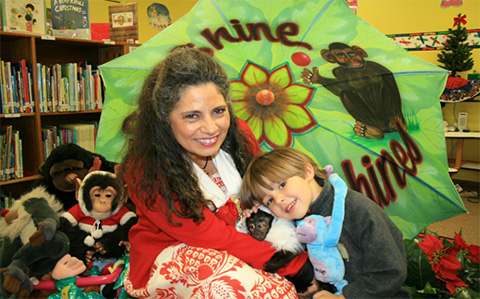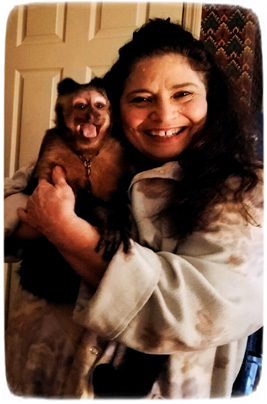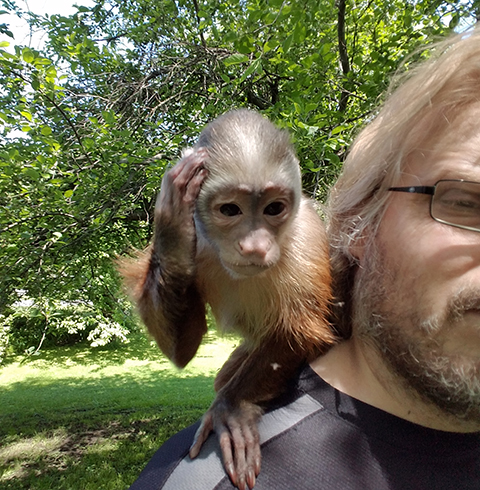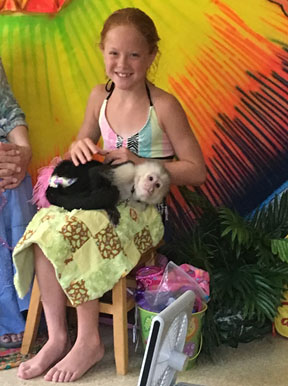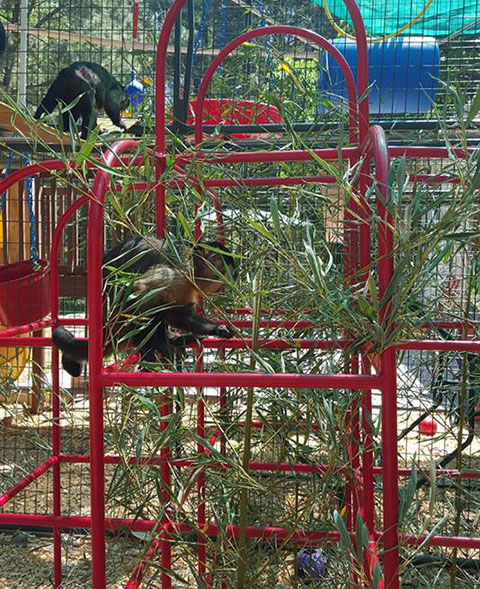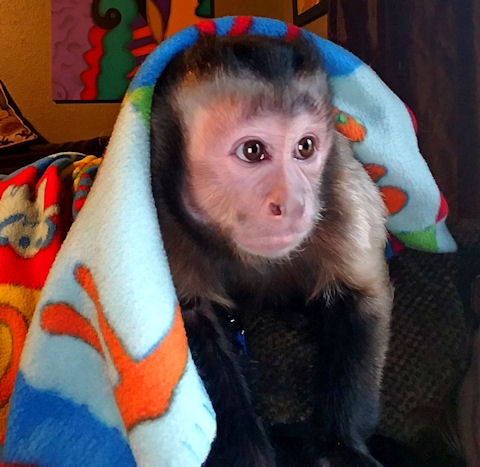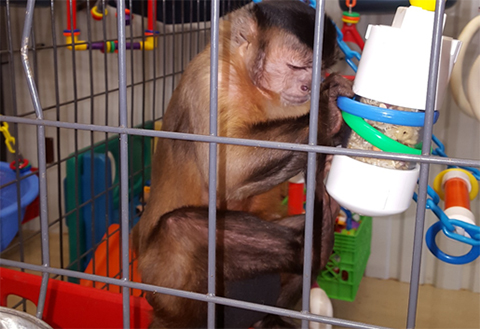By Janice Metzger
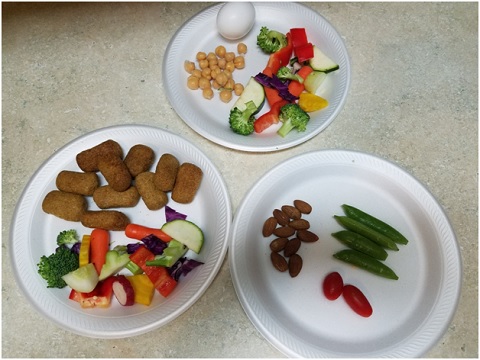
Feeding a nonhuman primate can be complicated. How many biscuits should you feed? What kind of vegetables? Are they getting enough fiber? What IS fiber?! Am I feeding too much? Am I feeding enough? It’s no wonder that most of the questions we primate owners have about caring for our monkeys are related to diet.
Mazuri, a leading manufacturer of commercial primate diets, recommends that 50% of the primate diet be made up of biscuits and the other 50% made up of everything else that our monkey eats; such as vegetables, fruits, browse, nuts, proteins, etc. BUT, animal diets are always measured by weight, not by volume. To make this even more difficult, foods are measured on a dry weight basis. This means that you must calculate what the food weighs minus the moisture, or water content, in the food. There are numerous complicated formulas for doing this, but most of us in private ownership do not have access to this information. So, what do we do?
Fortunately for us, Mazuri recently published a shortcut on their website that can be calculated easily with a kitchen scale. Mazuri recommends a diet of 30% biscuits, 70% other foods by actual weight (not dry weight). This shortcut considers that vegetables, fruits, nuts, seeds, proteins and browse have a higher water content than dry biscuits. So, if we were to somehow squeeze all the water out of a diet of 30% biscuits/70% other foods, the result would be a diet that is approximately 50% biscuits and 50% other foods by dry weight, the industry standard.
Still confused? Are you pulling your hair out and screaming, “JUST SHOW ME HOW TO FEED MY MONKEY!”?
(more…)
